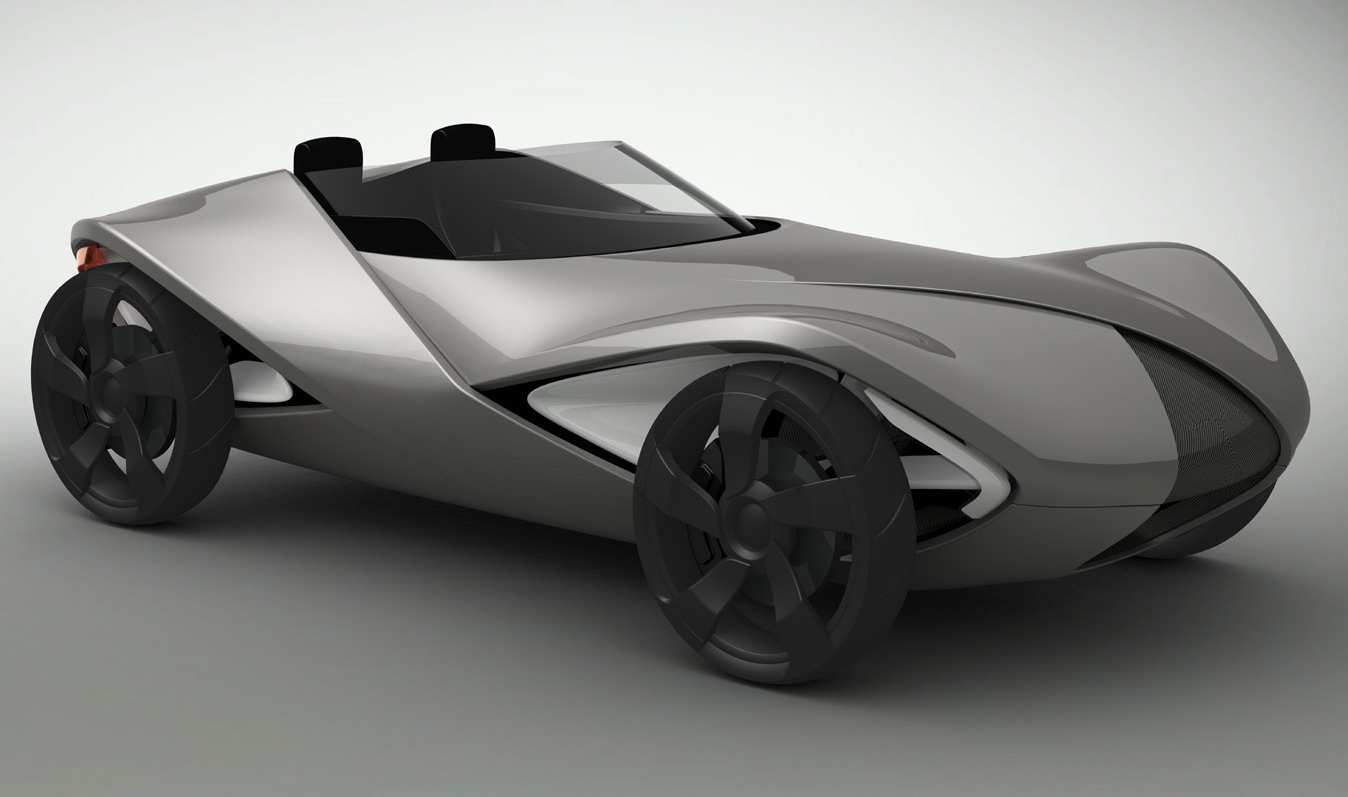
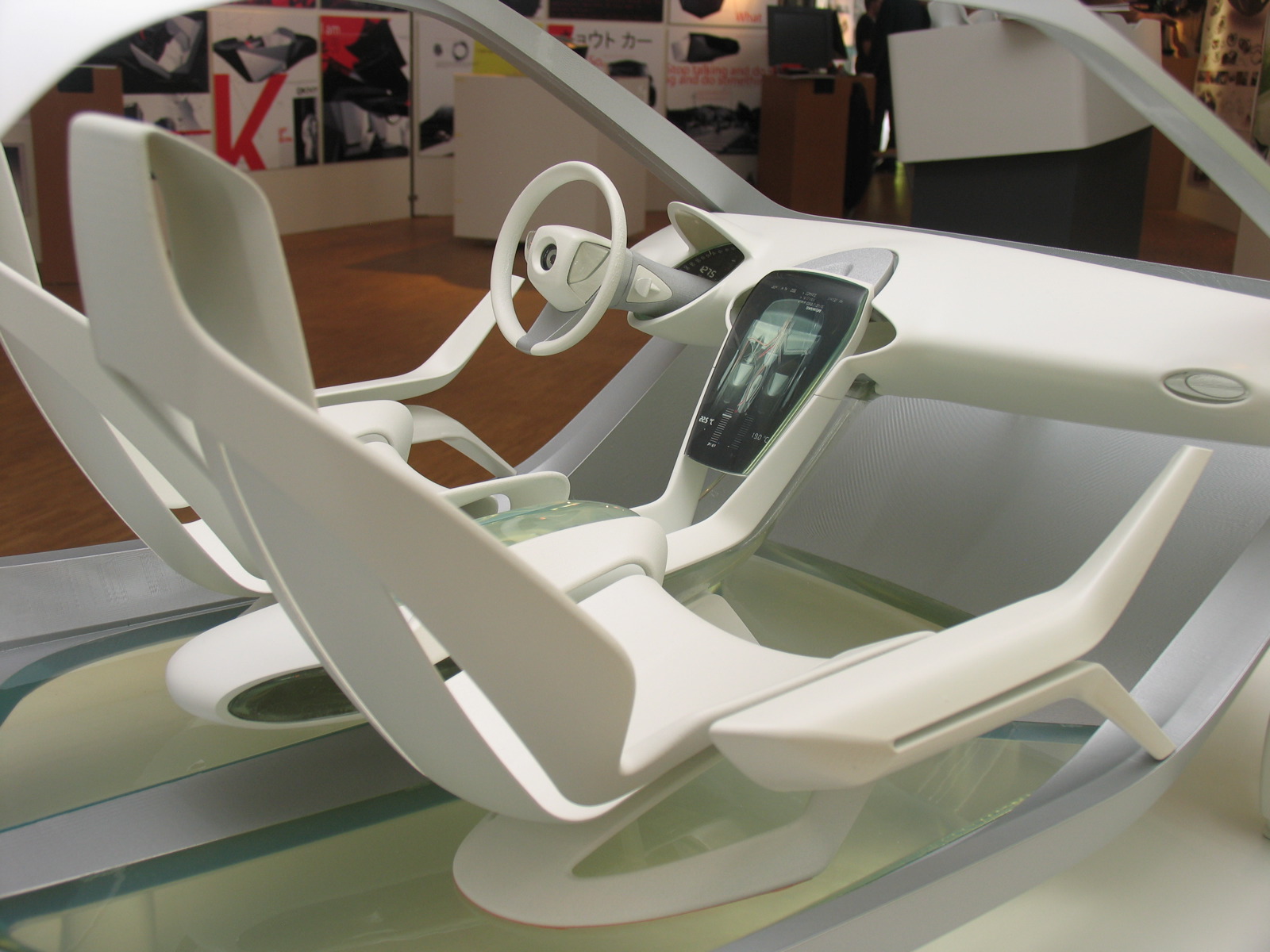

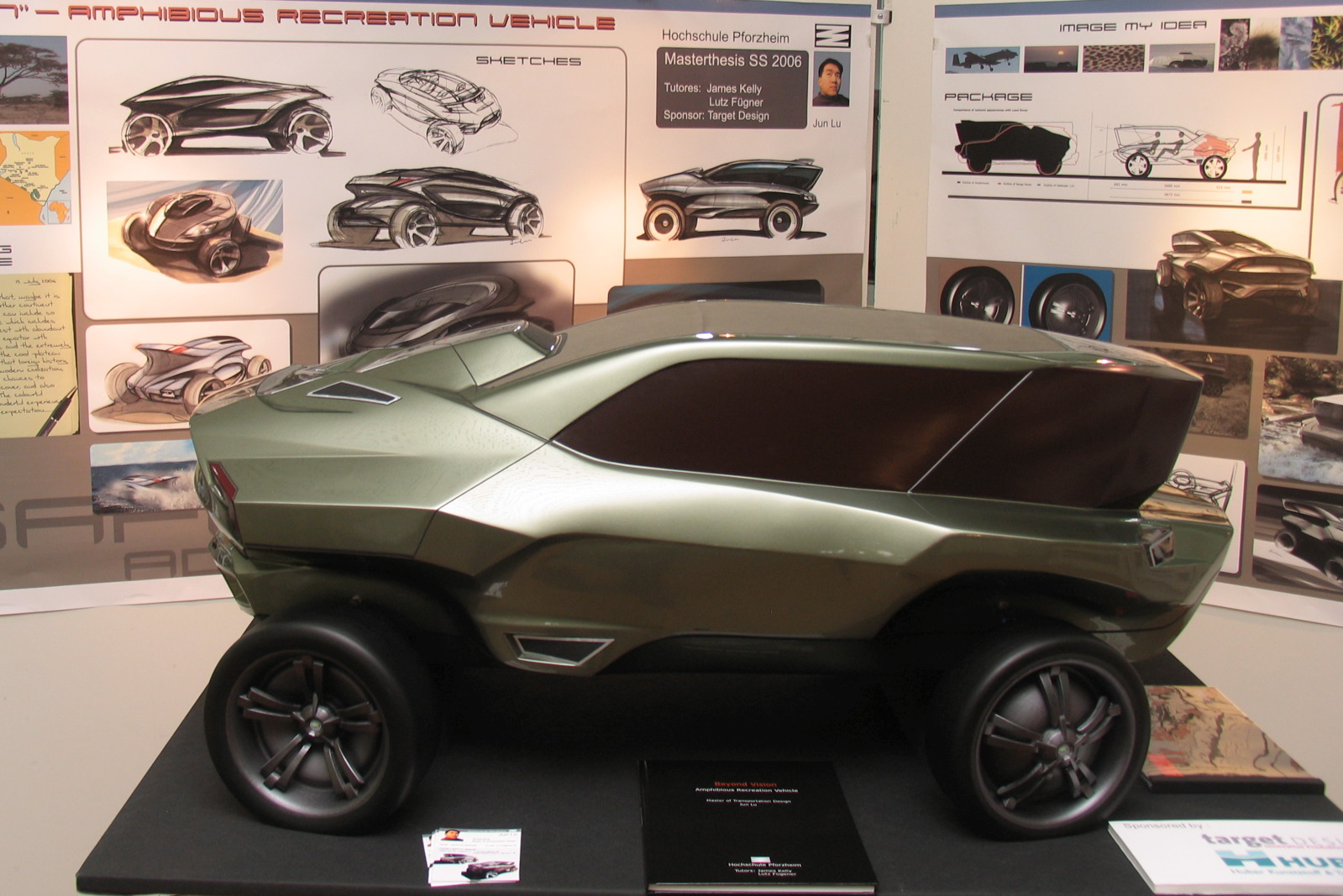
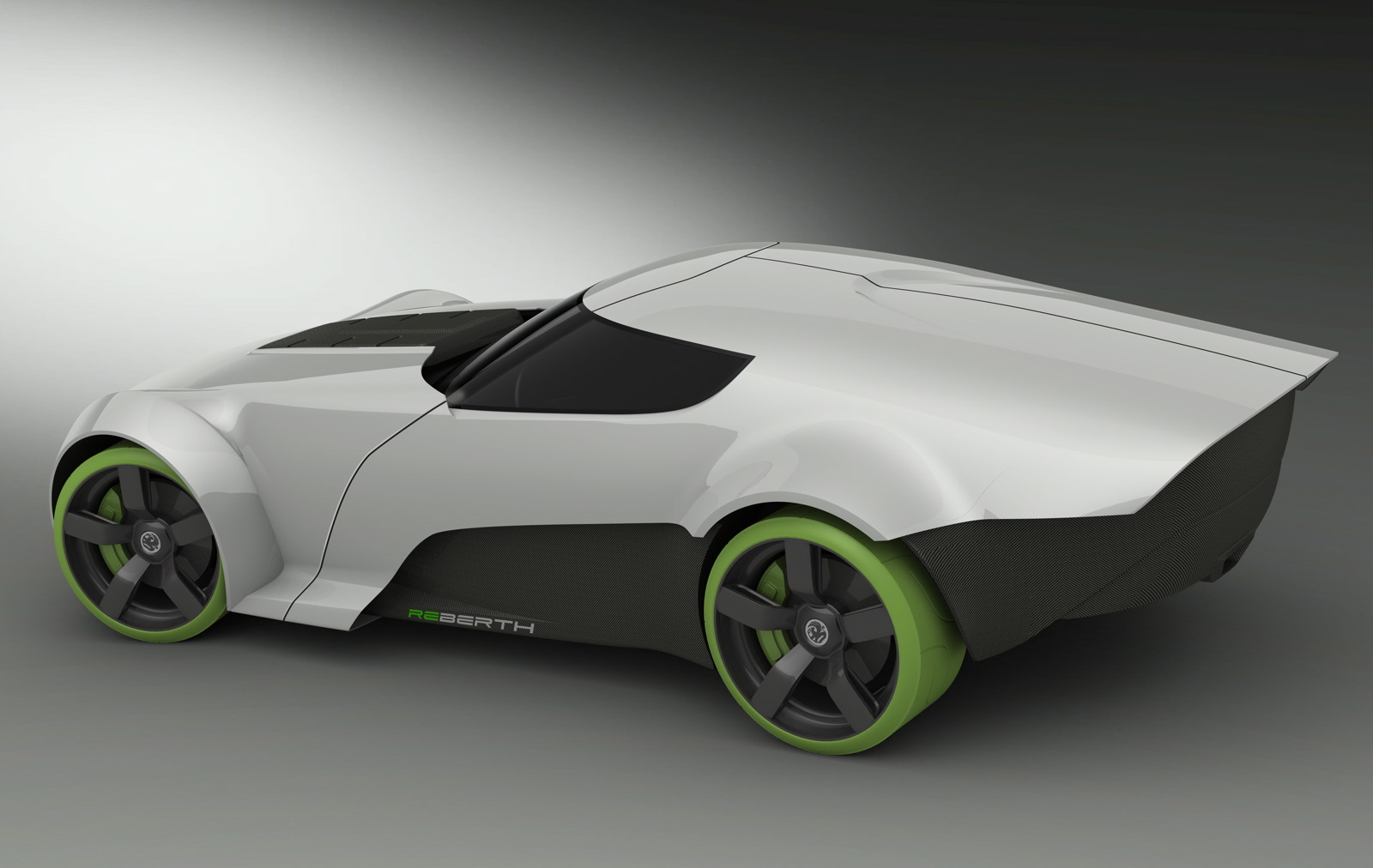
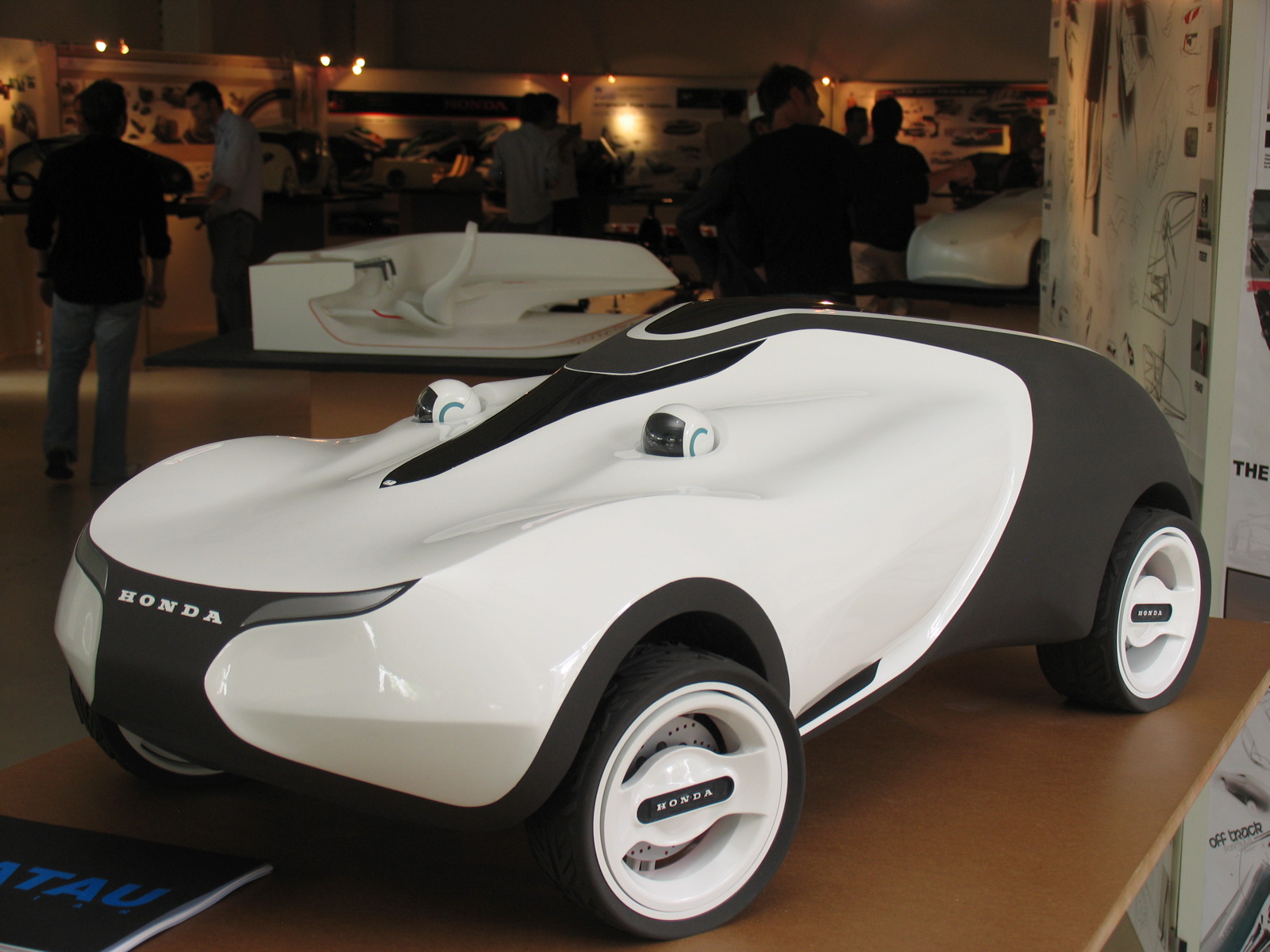
The 1st and 2nd semester Masters students presented a Mazda-sponsored project called 'MX Box'. The 1st semester Masters students presented exterior proposals, while the 2nd semester students presented both exterior and interior proposals. All proposals were presented as digital model renderings and animations.
The 5th and 7th semester students presented a Honda-sponsored project 'A Car for Jenson Button or Rubens Barichello. The 5th semester students presented exteriors, while the 7th semester students presented interior proposals.
The Master thesis projects included:
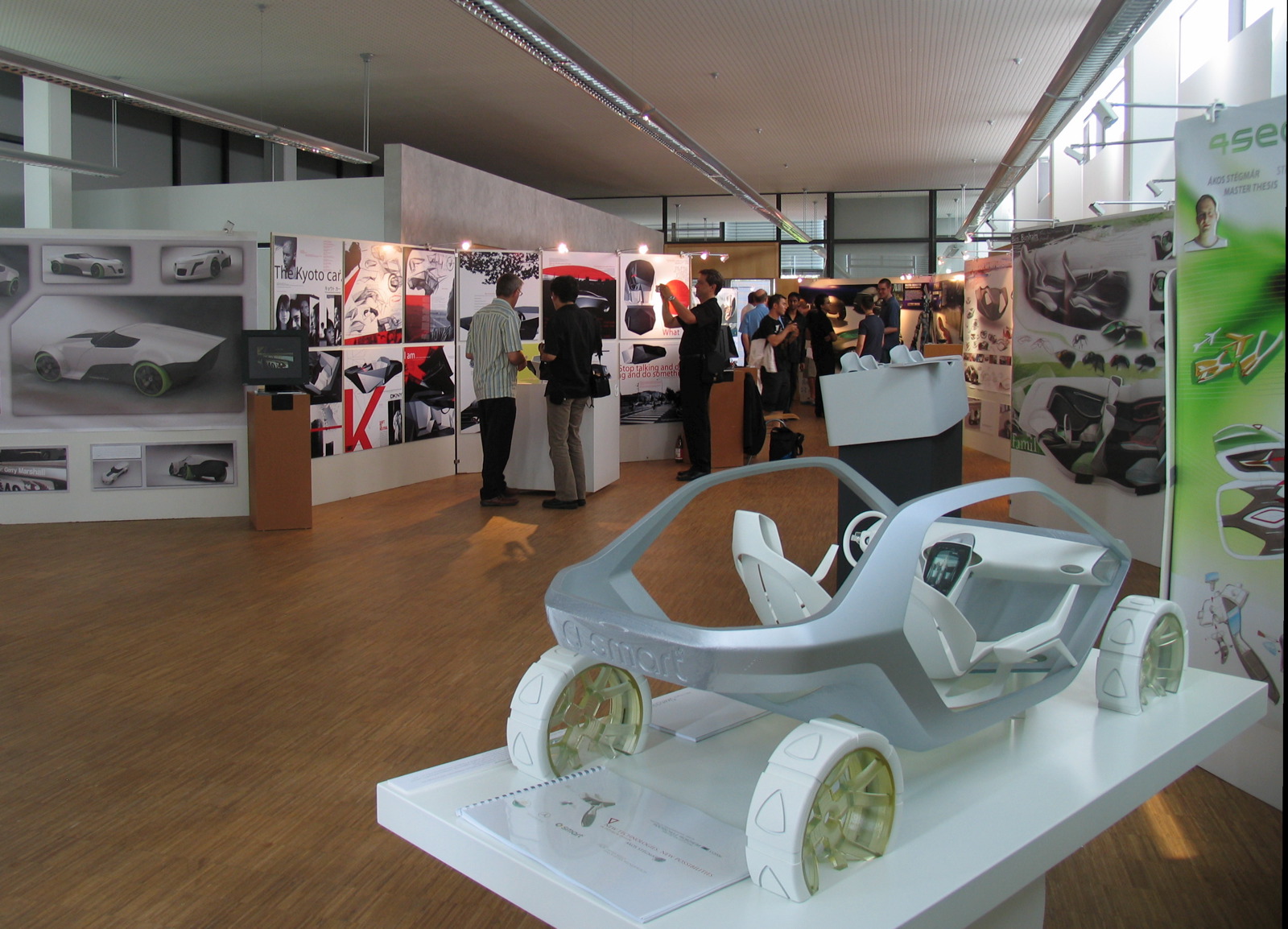

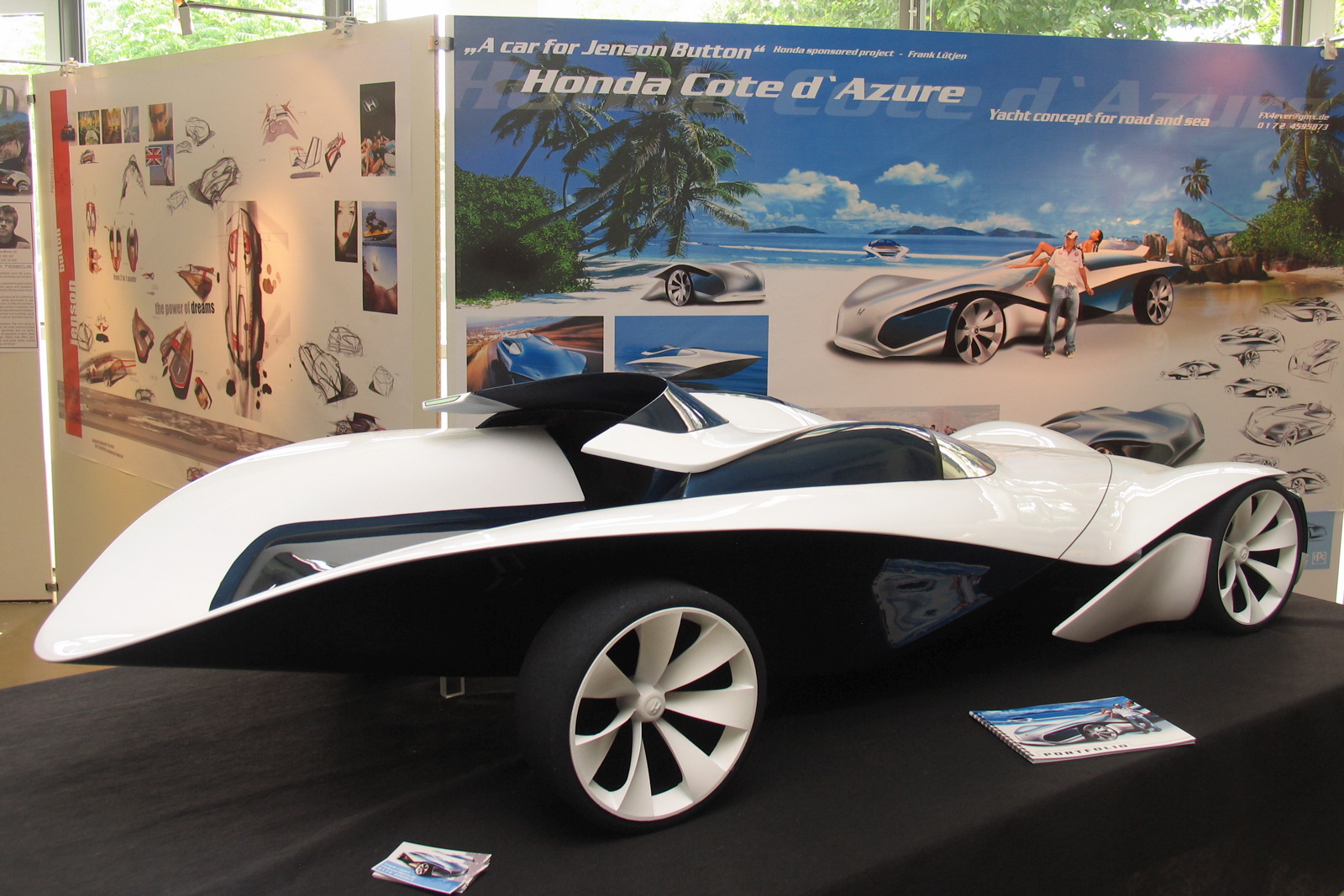
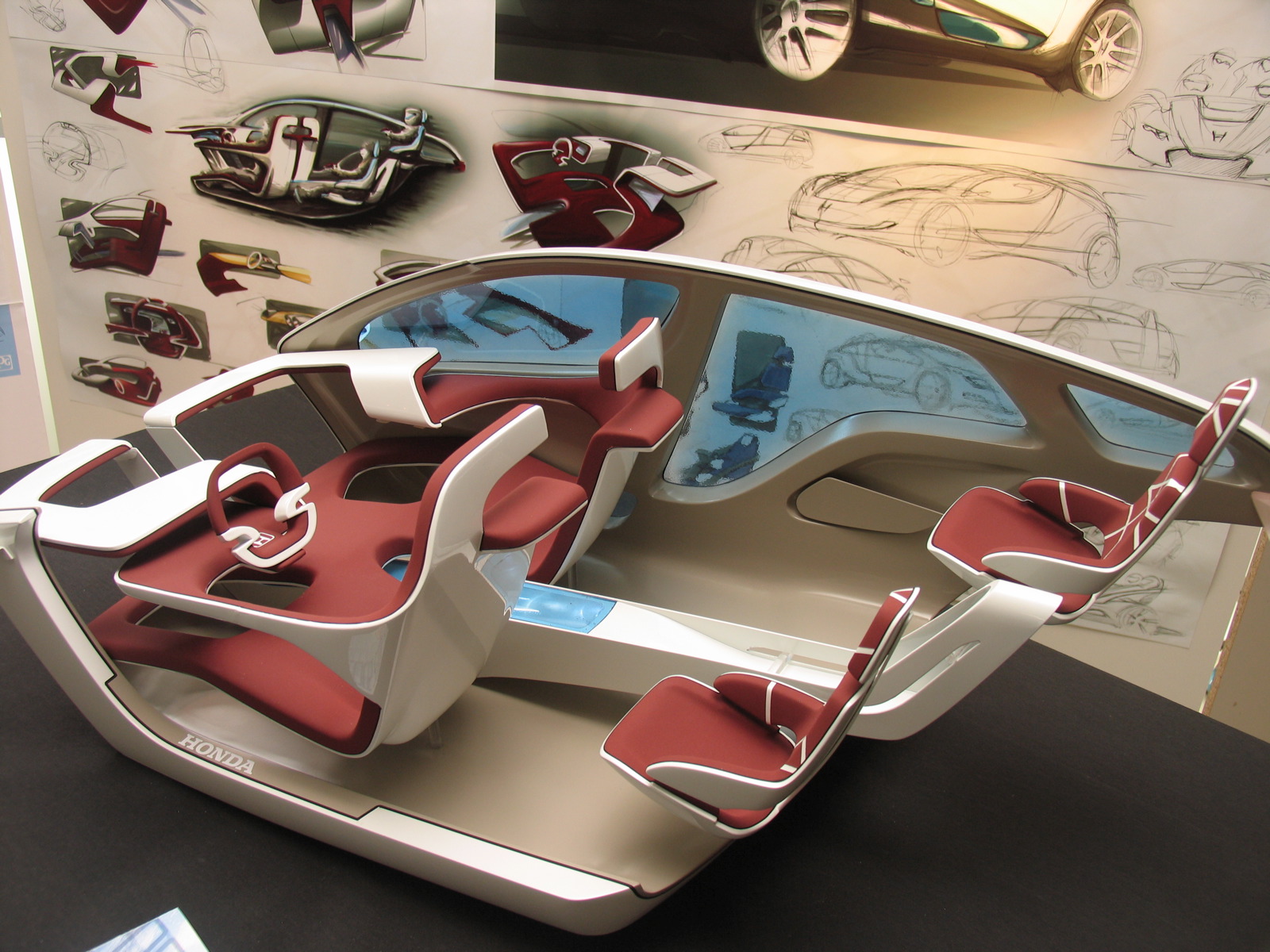
A Car for an Art Lover
Pavle Trpinac
Trpinac has created a sophisticated and emotional vehicle for an art lover. The car is an electric powered compact roadster with a body that resembles a Moebius band. One of the aims was to design a body which would look like an automotive sculpture once all of the other parts were removed. The constant flow of surfaces and lines suggests dynamic character without giving the car an overtly aggressive appearance. The design captures some of the philosophy behind the works of C. R. Mackintosh and 'The Blue Rider Group' members - the mixture of organic and geometric shapes from the former and the understanding of the importance of feelings and dreams from the latter.
New Technologies, New Possibilities in Interior Design
Akos Stegmar
In future, rapid prototyping has unlimited possibilities to produce parts in mass production. This concept explores how this could change the interior design of a vehicle with a controlled organic form language, that takes inspiration from the Moebius band and other non-rational mathematical surfaces, natural structures and 'inside outside' changes. The Tridion frame of the vehicle includes all the electro, technical, mechanical and integrated crash elements. The goal was to reduce the number of parts and save weight and production time by creating rigid bone-like structures with functions integrated into each part. Inside the vehicle, clever features include the main surface structure of the centre console incorporating air ducting in a single part. Elsewhere, a mobile computing solution with touch screen makes it possible to use the onboard computer at home, while seats feature a flexible lightweight structure, with Technogel soft pad inserts in different colours.
Beyond Vision
Jun Lu
This vehicle combines the unique features of an amphibious recreational vehicle with a safari off-road vehicle. The passenger cab is located forward of the engine, ensuring a front-high orientation of the vehicle when it crosses water, and provides passengers with a better outlook and wide sitting space. Each wheel features an airbag which is inflated when the vehicle is driving in water, to provide buoyancy. The hybrid engine enhances environmental protection in the wildlife reserves. The driver can adjust the orientation of the cabin on angled ground, and can steer all four wheels in the same direction, start the electric motor and quietly follow the animals moving at low speed.
Florian Flatau (5th semester)
Asimo-chauffeured FCX Limousine
Inspired by the technology of Transrapid trains to communicate 'as safe as a train on track', this vehicle has a masculine proportion and organic surfacing. Hidden shutlines enhance the sculptural effect. The car is entered at the rear with the roof of the cabin splitting in two and a jet-like rear door opening towards the ground for ingress. Passengers are invited inside by a red carpet extension, a secure lighting system and two Asimo robots which act as chauffeurs, having emerged from the vehicle's upper service.
About Pforzheim
The Pforzheim Transportation Design Department is located on the outskirts of the town of Pforzheim, between Stuttgart and Karlsruhe.
The first three semesters of the Transportation Design course are taught in conjunction with the Industrial Design course. In the fourth semester students begin to specialize in transportation design. The school has a Master of Transportation Design program (MTD) which is a three semester course. A diploma or degree in Industrial design is required for acceptance on this course.
The school recieves support from the car industry through sponsored projects and regular visits from designers who tutor students in the various aspects of transportation design. BMW, Audi and VW regularly offer internships while Porsche and Mercedes are located nearby.
Related stories:
Pforzheim Design Forum 2006
Pforzheim Spring Degree Show 2006
Pforzheim Summer Degree Show 2005
Pforzheim University Design website:
www.gestaltung.hs-pforzheim.de


































